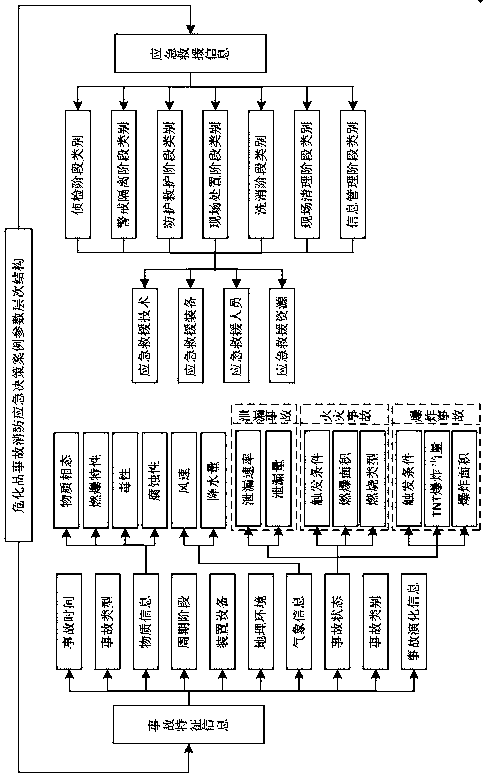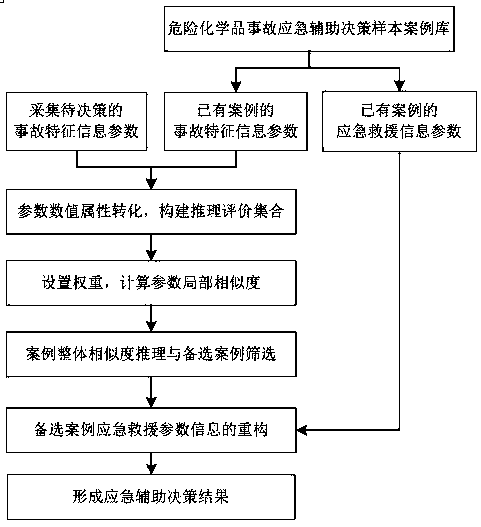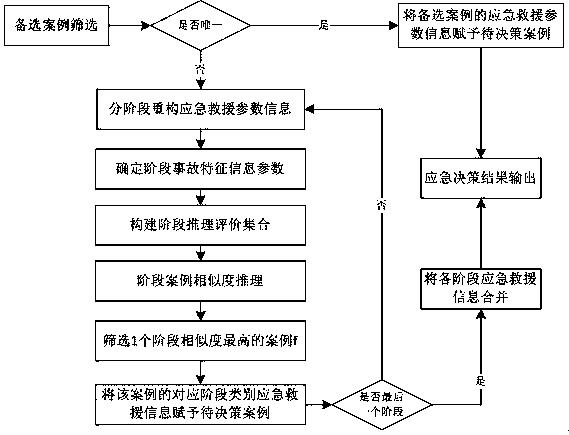Case-based reasoning method facing hazardous chemical accident emergency aid decision making
A hazardous chemical and auxiliary decision-making technology, applied in the field of case reasoning for emergency auxiliary decision-making for hazardous chemical accidents
- Summary
- Abstract
- Description
- Claims
- Application Information
AI Technical Summary
Problems solved by technology
Method used
Image
Examples
Embodiment
[0199] Embodiment: The specific steps of the reasoning process are as follows:
[0200] Step 1: Construction of sample cases for the integration of accident characteristics and emergency rescue information.
[0201] For the evolution process and emergency rescue process of known accidents of hazardous chemicals, the available accident time, accident type, material information, cycle phase, equipment, geographical environment, meteorological information, accident status, accident category, accident evolution information, etc. Accident feature information and emergency rescue information such as detection, warning and isolation, protection and rescue, on-site disposal, decontamination, on-site cleaning, information management, etc. are extracted. The acquired data information is formed into a sample case by using frame notation. In conjunction with the embodiment, the accident characteristic information and emergency rescue information extracted by it are as shown in Table 1: ...
PUM
 Login to View More
Login to View More Abstract
Description
Claims
Application Information
 Login to View More
Login to View More - R&D
- Intellectual Property
- Life Sciences
- Materials
- Tech Scout
- Unparalleled Data Quality
- Higher Quality Content
- 60% Fewer Hallucinations
Browse by: Latest US Patents, China's latest patents, Technical Efficacy Thesaurus, Application Domain, Technology Topic, Popular Technical Reports.
© 2025 PatSnap. All rights reserved.Legal|Privacy policy|Modern Slavery Act Transparency Statement|Sitemap|About US| Contact US: help@patsnap.com



